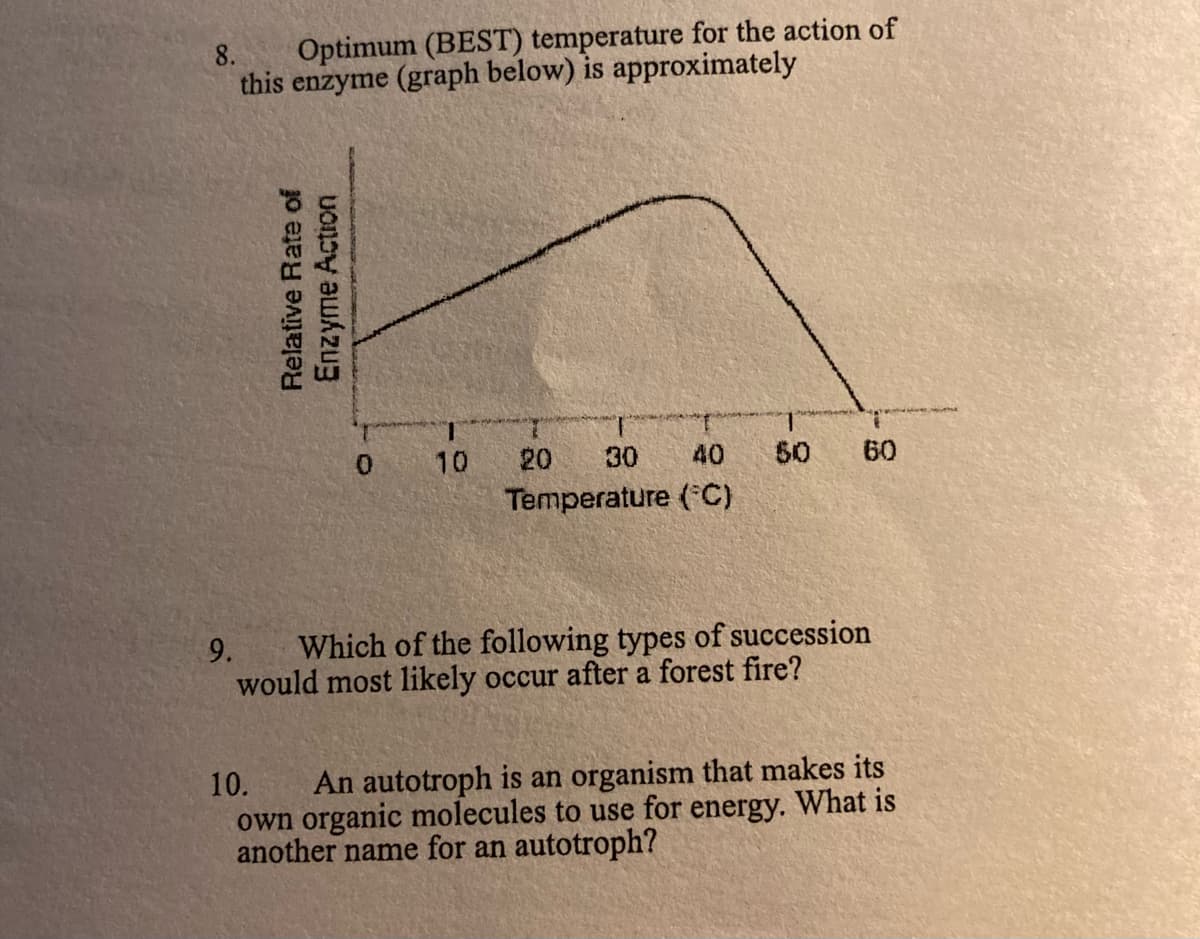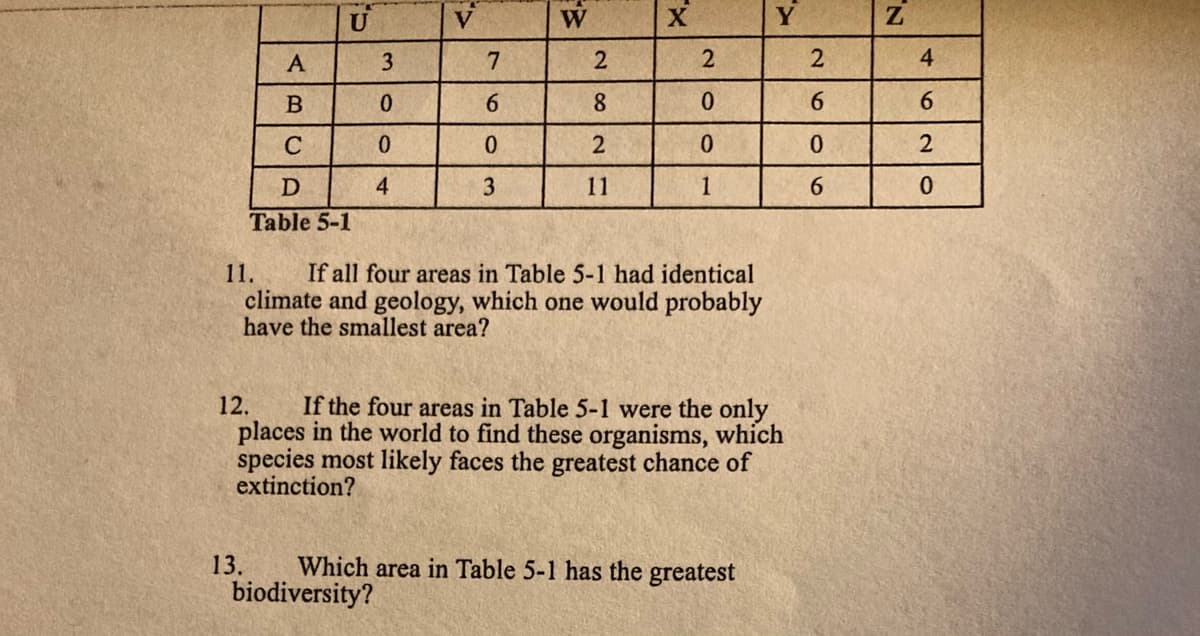8. Optimum (BEST) temperature for the action of this enzyme (graph below) is approximately 1. 50 1. 10 20 30 40 60 Temperature (C) Relative Rate of Enzyme Action
8. Optimum (BEST) temperature for the action of this enzyme (graph below) is approximately 1. 50 1. 10 20 30 40 60 Temperature (C) Relative Rate of Enzyme Action
Biology: The Unity and Diversity of Life (MindTap Course List)
15th Edition
ISBN:9781337408332
Author:Cecie Starr, Ralph Taggart, Christine Evers, Lisa Starr
Publisher:Cecie Starr, Ralph Taggart, Christine Evers, Lisa Starr
Chapter28: Plant Nutrition And Transport
Section: Chapter Questions
Problem 1CT: Nitrogen deficiency stunts plant growth and causes leaves to turn yellow and then die. Why does...
Related questions
Question

Transcribed Image Text:8.
Optimum (BEST) temperature for the action of
this enzyme (graph below) is approximately
1.
50
0.
10
20
30
40
60
Temperature (C)
9.
Which of the following types of succession
would most likely occur after a forest fire?
An autotroph is an organism that makes its
own organic molecules to use for energy. What is
another name for an autotroph?
10.
Relative Rate of
Enzyme Action

Transcribed Image Text:U
V
W
X.
Y
Z
3
7
2
4.
6.
8.
C
4
3
11
1
6.
Table 5-1
If all four areas in Table 5-1 had identical
climate and geology, which one would probably
have the smallest area?
11.
If the four areas in Table 5-1 were the only
places in the world to find these organisms, which
species most likely faces the greatest chance of
extinction?
12.
13.
Which area in Table 5-1 has the greatest
biodiversity?
620
69
N OO
A.
Expert Solution
This question has been solved!
Explore an expertly crafted, step-by-step solution for a thorough understanding of key concepts.
This is a popular solution!
Trending now
This is a popular solution!
Step by step
Solved in 2 steps

Knowledge Booster
Learn more about
Need a deep-dive on the concept behind this application? Look no further. Learn more about this topic, biology and related others by exploring similar questions and additional content below.Recommended textbooks for you

Biology: The Unity and Diversity of Life (MindTap…
Biology
ISBN:
9781337408332
Author:
Cecie Starr, Ralph Taggart, Christine Evers, Lisa Starr
Publisher:
Cengage Learning

Biology: The Unity and Diversity of Life (MindTap…
Biology
ISBN:
9781305073951
Author:
Cecie Starr, Ralph Taggart, Christine Evers, Lisa Starr
Publisher:
Cengage Learning

Biology (MindTap Course List)
Biology
ISBN:
9781337392938
Author:
Eldra Solomon, Charles Martin, Diana W. Martin, Linda R. Berg
Publisher:
Cengage Learning

Biology: The Unity and Diversity of Life (MindTap…
Biology
ISBN:
9781337408332
Author:
Cecie Starr, Ralph Taggart, Christine Evers, Lisa Starr
Publisher:
Cengage Learning

Biology: The Unity and Diversity of Life (MindTap…
Biology
ISBN:
9781305073951
Author:
Cecie Starr, Ralph Taggart, Christine Evers, Lisa Starr
Publisher:
Cengage Learning

Biology (MindTap Course List)
Biology
ISBN:
9781337392938
Author:
Eldra Solomon, Charles Martin, Diana W. Martin, Linda R. Berg
Publisher:
Cengage Learning

Biology 2e
Biology
ISBN:
9781947172517
Author:
Matthew Douglas, Jung Choi, Mary Ann Clark
Publisher:
OpenStax

Biology: The Dynamic Science (MindTap Course List)
Biology
ISBN:
9781305389892
Author:
Peter J. Russell, Paul E. Hertz, Beverly McMillan
Publisher:
Cengage Learning

Biochemistry
Biochemistry
ISBN:
9781305577206
Author:
Reginald H. Garrett, Charles M. Grisham
Publisher:
Cengage Learning